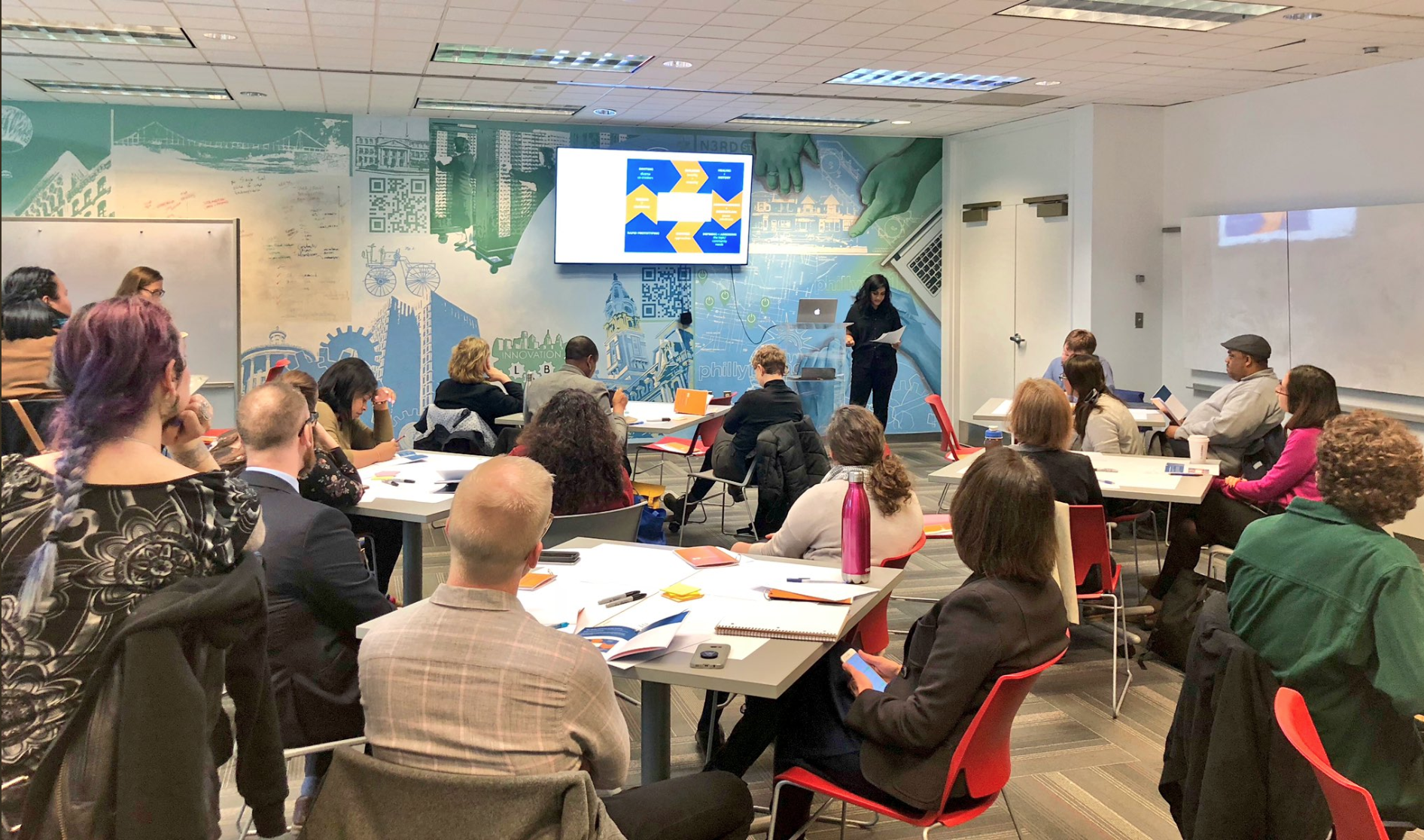designer, researcher, educator, activist
PHL DESIGN LAB: social sector design
LEARNING SESSION: workshop design and facilitation
BORDER STORIES: design innovation and citizenship
DEGREE SHOW: exhibition design
NHS INFORM FOOD: design research
GLASGOW AS SANCTUARY: activist design
SHIFTING RHYTHMS: community development
NGP VAN: ux/ui design and development
DOULA DESIGN: curriculum design
SEXUAL HEALTH VENDING MACHINE: feminist design
LEARNING SESSION
NOVEMBER 2018
how migh we build capacity for service design in local government?
CONTEXT
capacity builing through the PHL design lab
When the Participatory Design Lab was formed, one of its major goals was to build capacity within city employees to begin to use evidence based methods such as service design and social science in their own work. Rather than just working on one project with one city organization, the lab wanted to empower staff to begin to use these methods in their own work. Because the lab was granted funded, its impact was limited, so by providing tools and skills to city employees, the legacy of the lab could live on in their work. These ‘Learning Sessions’ were open to all city employees regardless of their department, and gave a taste of how evidence based methods could be used throughout city projects, leaving attendees with next steps to integrate these methods in their own work.
In my time serving as a service design fellow with the lab, I designed, led, and facilitated our last learning session, on equity-centered design.

WORKSHOP DESIGN
delivering presentation and activity to staff
I felt it important for city employees to understand not only human-centered design methodologies, but how, through a particular framing, these methods could be used to center equity. Since social services are all designed by someone at some point, the inequity that they produce is likewise designed. By encouraging city employees to see themselves as designers of these systems, we wanted them to understand how a reframing to center equity could help to redesign these systems to create equitable ones.
After a short presentation, we then led the room through a workshop using an equity-centered design tool, created through a combination of different existing frameworks. This allowed participants to see how they could begin to use an equity-centered practice in their own teams as soon as they left the room.
We left participants with a notebook which had notes on the basics of an equity-centered design framework as well as several tools to be used at various parts of the design process. This allowed them to take back what they learned and share with colleagues, increasing the impact of the lab even further.
